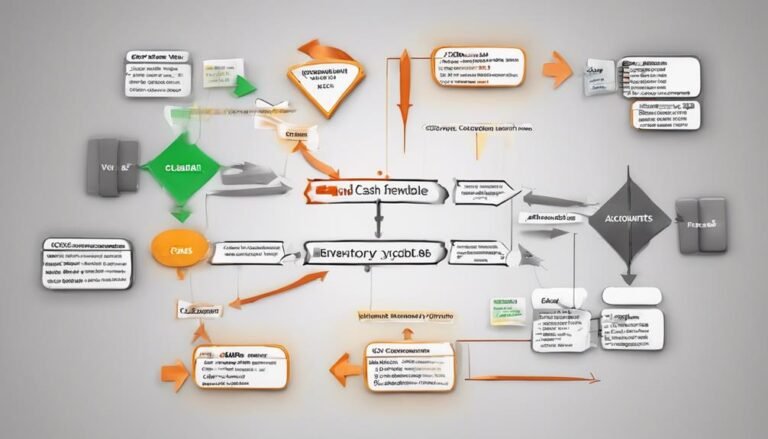Cost Per Thousand (CPM) Definition and Its Role in Marketing
Cost Per Thousand (CPM) in digital marketing is a fundamental pricing model that quantifies the cost incurred for every 1,000 ad impressions. It plays a pivotal role in evaluating campaign cost-effectiveness and shaping strategic advertising decisions, guiding marketers in optimizing budget allocation and enhancing ROI. CPM focuses on brand recognition through impressions, aiding in targeting specific audience segments effectively. By calculating CPM, marketers can compare cost-effectiveness across different channels and make informed decisions on resource allocation. Embracing CPM enhances ad performance evaluation, optimizes marketing strategies, and improves brand visibility. Understanding CPM is essential for successful marketing endeavors.
Key Takeaways
- CPM measures cost for every 1,000 ad impressions.
- Crucial for evaluating campaign cost-effectiveness.
- Guides budget allocation and audience targeting.
- Enables comparison of cost-effectiveness across channels.
- Enhances ad performance evaluation and brand visibility.
Definition of Cost Per Thousand (CPM)
In the domain of digital marketing, Cost Per Mille (CPM) stands as a fundamental pricing model that signifies the cost incurred for every 1,000 advertisement impressions displayed to potential consumers.
CPM measurement is vital as it allows advertisers to evaluate the cost-effectiveness of their campaigns based on the number of impressions received. Understanding CPM effectiveness is essential for businesses to determine the impact of their advertising strategies in reaching their target audience.
Importance of CPM in Marketing
With the foundation of Cost Per Mille (CPM) established as a pivotal metric in digital marketing campaigns, the significance of CPM transcends mere cost evaluation to become a strategic compass guiding marketing initiatives towards maximum audience engagement and return on investment. CPM plays an essential role in determining marketing effectiveness and ad performance through:
- Targeted Reach: CPM helps target specific audience segments effectively.
- Budget Allocation: CPM aids in optimizing budget allocation for maximum impact.
- Performance Tracking: CPM enables tracking ad performance metrics accurately.
- ROI Enhancement: CPM contributes to enhancing return on investment by evaluating cost-effectiveness.
CPM Vs. Other Pricing Models
Comparing Cost Per Mille (CPM) to other pricing models illuminates the strategic nuances of digital marketing campaigns and their impact on ad effectiveness and cost efficiency.
When evaluating CPM vs. ROI, CPM focuses on brand recognition through impressions, while ROI emphasizes the return on investment, analyzing the profitability of the campaign.
CPM is commonly utilized for brand awareness initiatives, aiming to increase visibility and recognition among the target audience. This contrasts with models like Cost Per Click (CPC) and Cost Per Acquisition (CPA), which concentrate more on specific actions and conversions.
Understanding these distinctions enables marketers to choose the most suitable pricing strategy based on their campaign goals, whether prioritizing brand exposure or driving immediate actions.
Calculating CPM and Its Significance
For marketers seeking to gauge the effectiveness of their advertising campaigns and allocate resources strategically, understanding how to calculate CPM is essential. Calculating CPM is a fundamental aspect of evaluating marketing effectiveness and optimizing campaign performance.
It involves dividing the total cost of the advertising campaign by the total number of impressions generated, then multiplying by 1000. This calculation provides insights into the cost efficiency of reaching a thousand potential customers through an ad campaign.
Importantly, CPM allows marketers to compare the cost-effectiveness of different advertising channels and campaigns, enabling informed decisions on resource allocation and maximizing the impact of marketing efforts.
Role of CPM in Advertising Success
How does the utilization of CPM contribute significantly to the success of advertising campaigns in the digital marketing landscape?
CPM plays an essential role in enhancing ad performance by providing a metric to evaluate marketing efficiency. By understanding the cost per 1,000 impressions, advertisers can gauge the effectiveness of their campaigns and optimize strategies accordingly.
CPM allows businesses to reach a broader audience and improve brand visibility, important for brand awareness campaigns. Additionally, CPM helps in setting realistic goals and measuring the impact of advertising efforts accurately.
Conclusion
In the symphony of marketing metrics, Cost Per Thousand (CPM) plays a pivotal role as the conductor orchestrating ad impressions. Like a painter meticulously crafting each brushstroke, CPM quantifies the value of 1,000 impressions, guiding advertising strategy and expenditure.
Its significance lies in illuminating the path to advertising success, harmonizing brand awareness campaigns with precision and finesse in the ever-evolving digital landscape.







